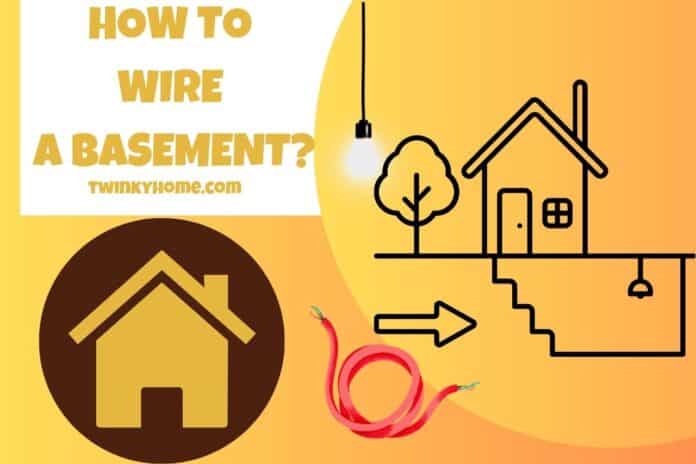Taking on a basement wiring project can be an exciting step to improve the use and convenience of your home. Knowing wiring fundamentals is essential to set up a cozy entertainment area, a home office, or a versatile living space. How to wire a basement? This article will explore the aspects of basement electrical wiring and all about essentials. After reading this article, you can build an effective electrical system that ensures effective power distribution and improves your basement’s usability.
Can I Do My Basement Electric Wiring By Myself?
The answer is yes. You can wire your basement electricity yourself, but educating yourself on the proper techniques and safety precautions is important. While it is legal for homeowners to undertake electrical projects without an electrician license, understanding electrical codes is essential.
Electricians have an extensive experience in electrical system-related skills and are well-versed in local regulations. They are familiar with the rules in their regular working areas but may encounter challenges in unfamiliar locations. Best to study reliable resources and consider consulting professionals to ensure a safe and compliant wiring job.
How Do You Plan The Electrical Layout For A Basement?
When planning the electrical layout for a basement, best to create a wiring diagram that illustrates the physical connections and layout of the electrical system, a wiring diagram helps visualize how the wires are interconnected and where fixtures and components are connected.
It would help if you understood your basement layout well to start planning the electrical layout. Use software or graph paper to create a scale drawing of the different rooms, walls, and furniture placement.
Focus on the electrical plan once you have the layout. Consider the placement of outlets, switches, and lighting fixtures. Start with the essential areas like exits, entries, and high-traffic areas. Place switches for fans, air conditioning units, and lights conveniently.
Consider ensuring practicality and feasibility after creating your initial plan. Consider factors like accessibility, code requirements, and safety. Make any necessary adjustments to optimize the layout.
A wiring diagram is a simplified representation of the electrical circuit and may not correspond exactly to the physical locations in the finished space. Consulting an electrician or using resources that guide electrical codes and safety practices is highly recommended to ensure a successful and compliant electrical layout for your basement.
How To Wire A Basement?
Follow these steps to wire a basement.
- Ensure the basement is clean and clutter-free, then mark the path. Considering the positions of outlets, switches, and lights, mark the wiring’s intended course.
- Install a sub-panel in an unfinished basement that serves as a central distribution point for the basement’s electrical circuits.
- Make holes in the studs according to the wire size you plan to use. Because of this, the cables from the outlets, switches, and lights can then be run to the sub-panel.
- Start running the cables through the holes you drilled, ensuring they are securely fastened and protected. When running the cables from the outlets, switches, and lights to the sub-panel, follow the marked path.
- Run wires along exposed wooden beams in the ceiling if your basement has them. Be careful to secure the wires well and follow safety regulations.
- Check building code requirements. Familiarize yourself with the building code requirements for safety to ensure compliance with rules.
- Gather the required tools and equipment for wiring, including wire cutters, wire strippers, and a voltage tester. Then, take measurements. Take measurements.
- Determine access points to guarantee precise wire lengths and appropriate fittings. Then sever power to guarantee safety while working. Locate the electrical panel’s access points and shut off the basement’s power sources.
- As required, drill holes for light fixtures, switches, and outlets. Install them as directed by the manufacturer, ensuring to ground them properly.
- Connect the dots in the following order. Make the required electrical connections, like joining cables to switches, outlets, and lighting fixtures. Verify again each connection is safe and appropriately insulated.
Electrical work can be complex and potentially hazardous. If you need more experience, consult a licensed electrician to ensure a safe and compliant wiring installation in your basement.
How Much Does It Cost To Wire A Basement?
The cost to wire a basement can vary significantly. Normally it is between $2,000 and $13,500. The exact cost depends on factors like the size of the basement, its layout, and site conditions. Wiring an unfinished basement with an open floor plan is generally less expensive than wiring a basement with multiple rooms, outlets, switches, and fixtures in each room.
The cost usually depends per square foot and might vary depending on the project’s complexity and the required finishing work. Best to obtain quotes from licensed electricians to get a more accurate estimate for your specific basement wiring project.
What Wire Do You Use For Basement Lights?
A common choice is to use 14/2 wire for most circuits and 14/3 wire for circuits that involve 3-way switches for wiring basement lights. Generally recommended to have two 250′ rolls of 14/2 wire. A smaller 50′ to 100′ roll of 14/3 wire for the project.
The specific type of wire required may vary depending on factors like the construction materials, structure, and any obstacles in the basement area. Best to consult local electrical codes and regulations and consider professional advice when determining the appropriate wire for your basement lighting project.
Does Wiring In The Basement Need To Be In Conduit?
The answer is yes. Wiring in a basement typically needs to be installed in conduit. If the wire used is THHN or THWN, it is considered suitable. The conduit protects the wires and helps prevent physical damage. One approved method is to mount a rigid conduit across the framing members or walls and run individual THHN conductor wires inside. It ensures that the wiring is adequately safeguarded and meets safety standards.
Can Electrical Panels Be In The Basement?
The answer is yes. Electrical panels can be located in the basement. Installing a sub-panel in the basement is a cost-effective solution for a basement remodel. A dedicated panel for the major appliances and fixtures in the basement ensures you won’t encounter issues like overloads and circuit trips.
When choosing the size of the panel, best to opt for a larger one, as it allows for future expansion and provides ample capacity for electrical needs.
What Is The Best Conduit For A Basement?
The best conduit for a basement, especially for exposed interior installations, is Electrical Metallic Tubing. EMT is commonly used in basements, unfinished garages, and workshops. It is the lightest and thinnest type of rigid metal conduit available, with 1/2-inch being the standard size for household circuits.
Other conduit options include Flexible Metal Conduit and Liquid-tight Flexible Metal Conduit, but EMT is often preferred for its ease of installation and suitability for basement wiring.
Here’s an Interesting Video,
VIDEO CREDITS: Platoon Garage YouTube Channel
Discover More: Related Articles You Can’t Miss








![OGX Biotin And Collagen Shampoo Review [Updated One] Ogx Biotin And Collagen Shampoo Review](https://twinkyhome.com/wp-content/uploads/2022/03/Are-chicken-Super-Noodles-vegetarian-1-100x70.jpg)